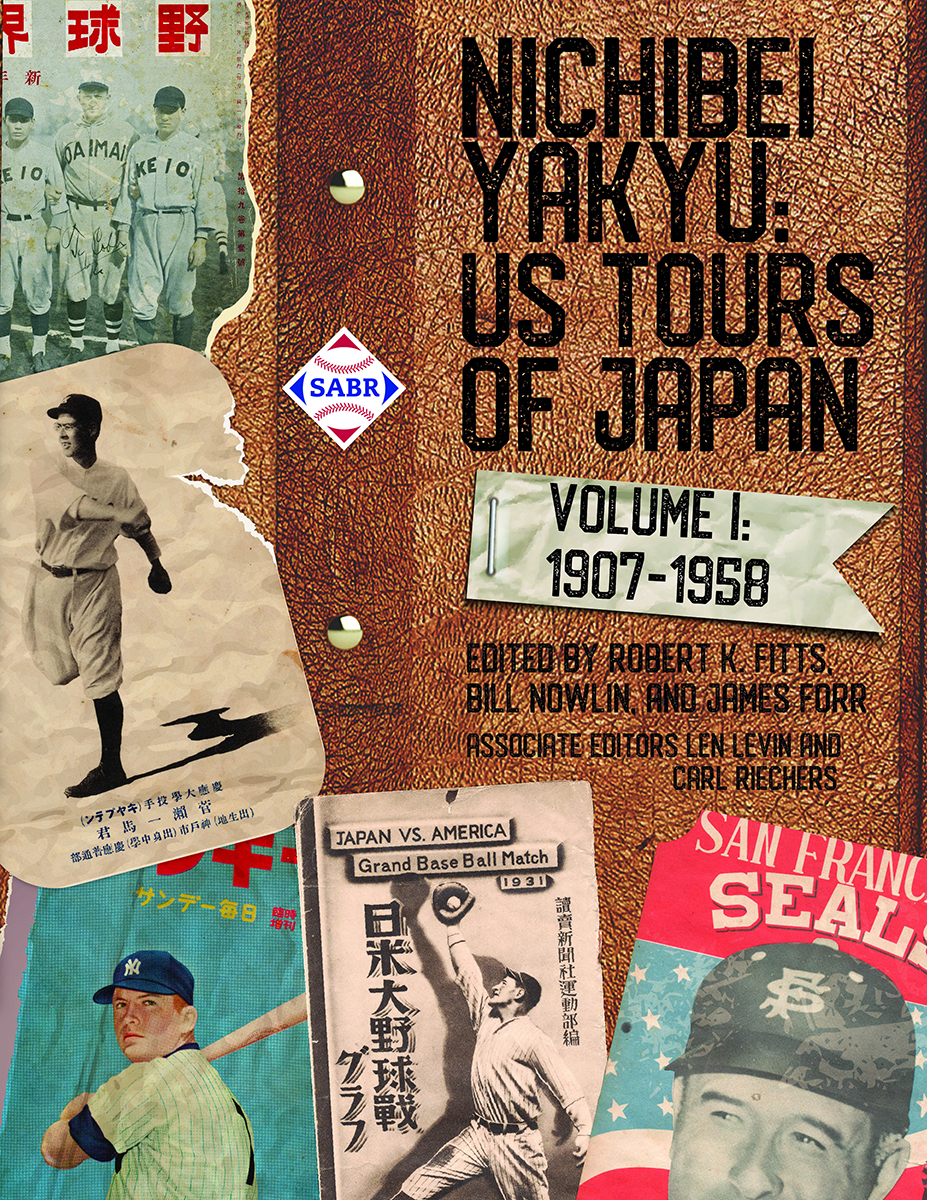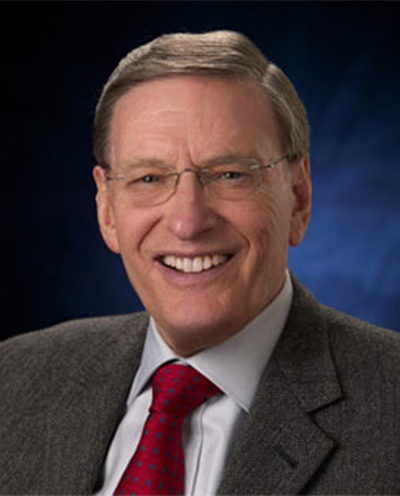Foreword: Nichibei Yakyu: US Tours of Japan 1907-1958
This article was written by Allan H. Selig
This article was published in Nichibei Yakyu: US Tours of Japan, 1907-1958
 Throughout my tenure as Commissioner of Baseball, I often said that baseball was a social institution with important social responsibilities. In that context, I would mention Jackie Robinson’s entry into major-league baseball on April 15, 1947, which forever ended the game’s racial barrier, as, perhaps, baseball’s proudest and most defining moment. But baseball, as a social institution, is not limited only to national interests. I have always believed it also is in the game’s best interest to serve the sport and expand its fan interest throughout the world.
Throughout my tenure as Commissioner of Baseball, I often said that baseball was a social institution with important social responsibilities. In that context, I would mention Jackie Robinson’s entry into major-league baseball on April 15, 1947, which forever ended the game’s racial barrier, as, perhaps, baseball’s proudest and most defining moment. But baseball, as a social institution, is not limited only to national interests. I have always believed it also is in the game’s best interest to serve the sport and expand its fan interest throughout the world.
Baseball’s long and rich history in Japan dates back more than 150 years—to the 1870s—when American visitors played the first game there. In 1872 an American educator, Horace Wilson, introduced baseball to his Japanese students in Tokyo, which led to the founding of the first Japanese baseball team, the Shinbashi Athletic Club in 1878. By the early part of the twentieth century, baseball was being played in schools throughout the country and had become Japan’s most popular sport. Baseball had become a pastime enjoyed by the people of two completely different cultures.
Early in the twentieth century there were numerous goodwill tours featuring American teams from all levels—college, professional, semi-pro, Negro Leagues and Japanese American—against Japanese players that took place in both countries. But the most famous tour surely was the one that US major leaguers made to Japan after the 1934 World Series. The All-American team included Babe Ruth, Lou Gehrig, Jimmie Foxx, Charlie Gehringer, and others. They played 18 games in 12 cities against Japanese competition over four weeks. It was a huge success even though at the start there was skepticism among some people in both countries because of the conflicts that were brewing in the 1930s.
But Babe Ruth and company were a sensation. News reports in Japan estimate that a half-million Japanese cheered the players as they rode through Tokyo in a motorcade upon entering the city. The Japanese fans warmly welcomed all the American players, but Ruth was the big hero. They chanted “Banzai Babe Ruth!” whenever he appeared on the field or anywhere in public. The tour produced competitive games and the performances of their own players produced great national pride. It also led to the formation of the Japanese professional baseball league two years later. However, whatever goodwill the 1934 All-Americans tour generated between the two countries would come to an end several years later.
 After World War II baseball resumed in Japan and once again the sport became wildly popular. There were a few US tours along the way, including one by the Brooklyn Dodgers in the 1950s. But it wasn’t until 1986 that the National and American Leagues began their all-star tours of Japan, sending a delegation to play against their Japanese counterparts every other year.
After World War II baseball resumed in Japan and once again the sport became wildly popular. There were a few US tours along the way, including one by the Brooklyn Dodgers in the 1950s. But it wasn’t until 1986 that the National and American Leagues began their all-star tours of Japan, sending a delegation to play against their Japanese counterparts every other year.
During my commissionership, I envisioned a greater global opportunity to expand the game and its influence in Japan as well as in other foreign destinations by playing regular-season games and even opening the season overseas. At first we stayed close to home. At the urging of the San Diego Padres, we held a three-game series between the New York Mets and San Diego Padres in Monterrey, Mexico, in August 1993 and we opened the 1999 season—again in Monterrey—with a game between the Padres and Colorado Rockies. While these events were certainly successful, they did not draw the kinds of crowds we did in Tokyo for four season openers during my term as Baseball Commissioner in 2000, 2004, 2008, and 2012.
The 2000 series was especially memorable. On March 29 and 30, at the Tokyo Dome in Japan, two teams—the New York Mets and Chicago Cubs—for the first time in major-league baseball history played regular-season games overseas. Each team won a game before massive crowds of 55,000 fans for each game.
The next season opener in Japan, in 2004, was equally memorable but for a different reason. This two-game series, between Tampa Bay and the New York Yankees, featured Japanese star Hideki Matsui, who had played in the Tokyo Dome for the Yomiuri Giants of the Nippon Professional Baseball League and, at this time, played in the Yankees outfield. The fans, of course, went crazy over Matsui and he rewarded them with a two-run home run in the second game, which was won by New York. The teams split the series. Each game drew a sold-out crowd of55,000.
Matsui wasn’t the only Japanese star to return home and play an opening series for a US major-league team. Four years later, in late March of 2008, Daisuke Matsuzaka, who had played for the Seibu Lions of the NPB two years before, started for the Boston Red Sox in the first game against the Oakland A’s. Matsuzaka pitched five strong innings. The Red Sox won the game in extra innings and Hideki Okajima, who also had joined the Red Sox from Japan’s Nippon Professional Baseball league, picked up the win in relief.
And then, another four years later, in 2012, Seattle opened the season at the Tokyo Dome against Oakland along with its All-Star outfielder and Japanese legend Ichiro Suzuki, who was beginning his 12th season with the Mariners. Ichiro had been a great player in Japan with the Orix Blue Wave in the NPB and continued his greatness with the Mariners. He had four hits and an RBI in the first game, while Oakland won the second game.
The other Opening Games played overseas during my tenure took place in San Juan, Puerto Rico, in 2001 and in Sydney, Australia, in 2014.
Another global adventure MLB launched was the World Baseball Classic in partnership with the Major League Baseball Players Association. The agreement, which was to allow the participation of major leaguers, set the stage for an international baseball tournament to be played every four years. MLB players could play for a foreign team as well as for the US team. Japanese baseball played a key role in the Classic. Not only did Japan host games in each of the four tournaments but it won the first two tournament titles. Ichiro Suzuki and Daisuke Matsuzaka both played for Japan during those two tournaments and both times Matsuzaka was named the World Baseball Classic Most Valuable Player.
Suzuki, Matsuzaka, and Matsui were not the only Japanese players to make an impact. More than 60 Japanese-born players have played in US major-league baseball over the years, beginning with Masanori Murakami, who pitched for the San Francisco Giants toward the end of the 1964 season and through the next season. But it took another 30 years before Hideo Nomo signed with the Los Angeles Dodgers and became the second Japanese player. Nomo was the National League Rookie of the Year in 1995 and threw two no-hitters during his 12-year US career.
Ichiro Suzuki, of course, had a stellar 19-year career and, I believe, will surely make the Hall of Fame. Besides accumulating a lifetime .311 batting average and accumulating more than 3,000 hits after transitioning from nine years in the Japan Pacific League, he too was a Rookie of the Year in addition to being named the 2001 American League Most Valuable Player during his first season.
And at present there is Shohei Ohtani who entered the major leagues with the Los Angeles Angels in 2018 as the first bona fide hitter/pitcher since Babe Ruth. He was the American League’s Rookie of the Year and in 2021 was the unanimous choice for the AL Most Valuable Player Award. In 2021 he was the first player in baseball history to play in the All-Star Game as both a hitter and pitcher.
Baseball in Japan has come a long way over the last 150 years and much of its success, if not all of it, can be attributed to “Baseball’s Bridge Across the Pacific,” beginning with that first game played in Yokohama between American residents and visiting crew members on board the USS Colorado as well as American teacher Horace Wilson, who introduced the game to his students, all the way to the present, when Angels outfielder-pitcher Shohei Ohtani, a native of Japan, is on the top tier of American baseball.
ALLAN H. “BUD” SELIG was the ninth commissioner of baseball, a position he held for 22 years, and is a member of the National Baseball Hall of Fame. In his current role as commissioner emeritus, Selig advises the commissioner and contributes to many special projects. Prior to his work as the commissioner, Selig served as the chairman of Major League Baseball’s Executive Council. Selig’s memoir, For the Good of the Game, was published by HarperCollins in July 2019. Selig has been recognized for his great work in baseball and philanthropy. His many awards include the Jackie Robinson Foundation’s Lifetime Achievement Award, the Taylor Hooton Foundation’s inaugural Taylor Award, the Green Sports Alliance’s Environmental Leadership Award, B’nai B’rith International’s Distinguished Humanitarian Award; the Boys & Girls Clubs of America’s Chairman’s Award, the New York Baseball Writers’ William J. Slocum/Jack Lang Award, and the St. Louis Baseball Writers’ “Red Award.” The National Baseball Hall of Fame and Museum unveiled the Allan H. “Bud” Selig Center for the Archives of Major League Baseball Commissioners, a permanent research space within the halls of Cooperstown, dedicated in his honor. In October 2014, he was inducted into the Broadcasting & Cable Hall of Fame. Bud attended the University of Wisconsin-Madison and has been honored by having numerous scholarships named after him. He taught at Marquette University’s Law School and currently teaches at Arizona State University and the University of Wisconsin- Madison. He and his wife, Sue, have three daughters, five grandchildren, and one great-grandson.


